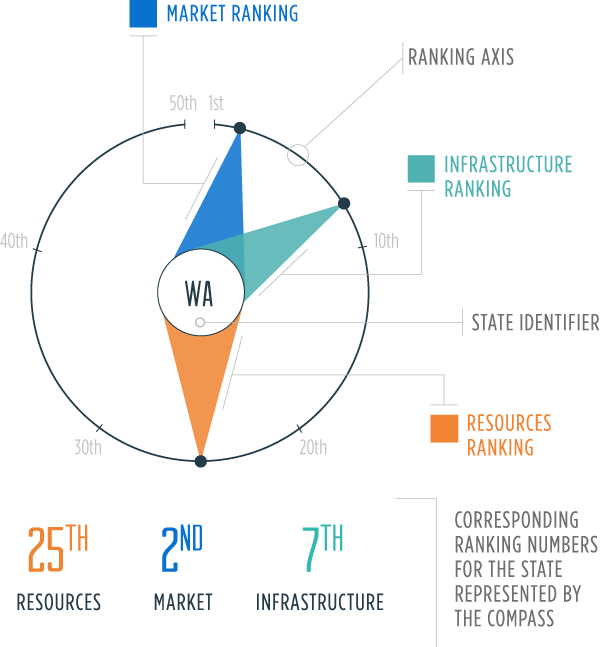Solar Southwest > California
Resources: A measure of total energy production and consumption per capita
Market: The cost of consumption, measured in electricity prices and gasoline taxes
Infrastructure: Capacity to generate and refine energy sources; miles of pipelines
Crude oil production in California has declined over the past 25 years due—in part—to state and federal leasing policies, but the state still accounts for more than 7% of total U.S. production. California has extensive oil reserves in the geologic basins along the Pacific Coast and in the Central Valley.
California is the most populous state in the nation, and its total energy demand is second only to Texas.
Average electricity consumption in California homes is among the lowest in the nation. The state's low consumption is due in part to its mild climate and its energy efficiency programs.
Production trillion btu
Oil
Gas
Coal
Wind
Solar
Hydro
Biofuel
Nuclear
net energy Production trillion btu
Consumption trillion btu
Oil
Gas
Coal
Renewable
Nuclear
Gasoline Tax total state + federal, 2014
CA
USA
Key Policies
Sets a goal of 33% of electricity generation from eligible renewable resources by 2020. This represents one of the most aggressive renewable portfolio standards in the nation.
Requires that all motorists use—at a minimum—a specific blend of gasoline called California Reformulated Gasoline. In ozone non-attainment areas, motorists must use California Oxygenated Reformulated Gasoline.
Requires permits and surety for oil and gas well drilling. There are no permit fees. Compliance bonds begin at $25,000 a well and increase for deeper wells.
Electricity net production, trillion btu
CA
USA

